Home>Garden Essentials>What Are Turf Grass Types
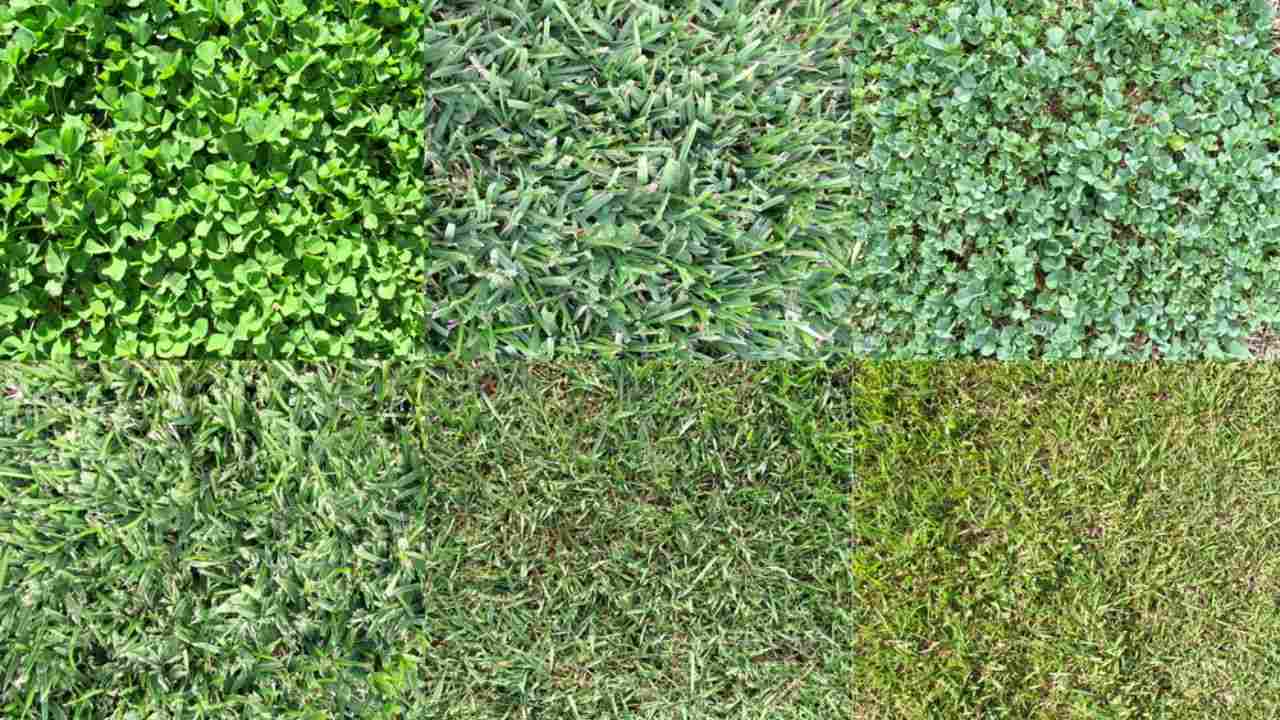

Garden Essentials
What Are Turf Grass Types
Modified: March 27, 2024
Looking to create the perfect garden? Discover the various types of turf grass available for your garden and find the one that suits your needs.
(Many of the links in this article redirect to a specific reviewed product. Your purchase of these products through affiliate links helps to generate commission for Storables.com, at no extra cost. Learn more)
Introduction
Gardens bring life and beauty to our homes. Whether you have a sprawling backyard or a small balcony, creating and maintaining a garden is a fulfilling endeavor. One key aspect of a flourishing garden is the choice of turf grass. Turf grass not only provides a lush green carpet but also plays a crucial role in preventing soil erosion, reducing heat, and enhancing the overall aesthetic appeal of the landscape.
When it comes to turf grass types, there are numerous options available, each with its own unique characteristics and suitability for specific environments. Understanding the different types of turf grass is essential in order to make an informed decision and achieve the desired results in your garden.
In general, turf grass can be categorized into warm-season and cool-season varieties. Warm-season turf grass thrives in hot and humid climates, whereas cool-season turf grass performs well in cooler regions. Let’s explore some popular options within each category:
Key Takeaways:
- Different turf grass types thrive in specific climates and soil conditions. Understanding these factors is crucial for selecting the right grass variety to create a healthy and visually appealing lawn.
- Consider factors such as sunlight, shade, and maintenance requirements when choosing turf grass. Each grass type has unique characteristics, so it’s important to match the variety with your garden’s specific needs.
Read more: What Type Of Turf Grass Is Florida Field
Warm-Season Turf Grass Types
Warm-season turf grass types are known for their ability to withstand high temperatures and thrive in regions with hot and humid climates. These grasses have an active growth phase during the warm months and tend to go dormant or turn brown during the winter. Here are some common warm-season turf grass types:
Bermuda Grass: Bermuda grass is a popular choice for warm-season regions due to its excellent durability and ability to withstand heavy foot traffic. It has a dense growth habit and can tolerate drought, making it suitable for areas with limited water availability.
Zoysia Grass: Zoysia grass is known for its dense, lush growth and beautiful dark green color. It has a deep root system that allows it to withstand drought conditions. Zoysia grass spreads slowly, resulting in a lower maintenance requirement for mowing.
St. Augustine Grass: St. Augustine grass is a popular warm-season turf grass known for its lush and carpet-like appearance. It thrives in well-draining soils with moderate shade and requires regular watering to maintain its vibrant green color.
Centipede Grass: Centipede grass is a low-maintenance warm-season turf grass that requires minimal fertilizer and irrigation. It has a fine texture and is well-suited for areas with acidic soils and moderate shade.
Bahiagrass: Bahiagrass is a warm-season turf grass that is particularly well-adapted to sandy and infertile soils. It has a deep root system, making it highly tolerant to drought conditions. Bahiagrass is known for its excellent weed resistance.
These warm-season turf grass types offer a range of options for homeowners in regions with hot and humid climates. Consider factors such as water availability, foot traffic, shade conditions, and maintenance requirements when selecting the best warm-season turf grass type for your garden.
Key Takeaways:
- Different turf grass types thrive in specific climates and soil conditions. Understanding these factors is crucial for selecting the right grass variety to create a healthy and visually appealing lawn.
- Consider factors such as sunlight, shade, and maintenance requirements when choosing turf grass. Each grass type has unique characteristics, so it’s important to match the variety with your garden’s specific needs.
Read more: What Type Of Turf Grass Is Florida Field
Warm-Season Turf Grass Types
Bermuda Grass
Bermuda grass is a popular warm-season turf grass that is widely used for lawns, sports fields, and golf courses. It is known for its excellent durability and ability to withstand heavy foot traffic. Bermuda grass has a deep root system, which allows it to tolerate drought conditions and recover quickly from damage.
One of the key advantages of Bermuda grass is its ability to thrive in full sun. It has a high tolerance for heat and can maintain its vibrant green color even during scorching summer months. This makes it an ideal choice for regions with hot and dry climates.
In addition to its resilience, Bermuda grass has a fine texture and forms a dense carpet-like appearance. This makes it visually appealing and gives it a luxurious look. It is often used in parks and recreational areas due to its ability to withstand heavy usage.
When it comes to maintenance, Bermuda grass requires regular mowing to keep it at an optimal height. It is also important to provide proper fertilization and irrigation to ensure healthy growth. Mowing height and frequency can be adjusted based on preferences and specific requirements.
Bermuda grass has a rapid growth rate, which means it can quickly recover from damage or heavy wear. This makes it an excellent choice for areas with high foot traffic, such as sports fields or playgrounds.
Overall, Bermuda grass is a versatile and robust warm-season turf grass that offers many benefits for homeowners and maintenance crews. Its ability to tolerate drought, resist wear and tear, and maintain its vibrant green color in hot conditions makes it a popular choice for those seeking a resilient and visually appealing lawn.
Key Takeaways:
- Different turf grass types thrive in specific climates and soil conditions. Understanding these factors is crucial for selecting the right grass variety to create a healthy and visually appealing lawn.
- Consider factors such as sunlight, shade, and maintenance requirements when choosing turf grass. Each grass type has unique characteristics, so it’s important to match the variety with your garden’s specific needs.
Read more: What Type Of Turf Grass Is Florida Field
Warm-Season Turf Grass Types
Read more: What Is Turf Grass
Zoysia Grass
Zoysia grass is a warm-season turf grass known for its dense, lush growth and beautiful dark green color. It is a popular choice for homeowners looking for a visually stunning and low-maintenance lawn.
One of the key advantages of Zoysia grass is its ability to withstand drought conditions. It has a deep root system that allows it to access moisture even in dry soil, making it highly drought-tolerant. This means less watering and reduced water consumption compared to other turf grass varieties.
In addition to its drought tolerance, Zoysia grass has excellent wear resistance and can handle heavy foot traffic. This makes it a great option for families with children or pets who frequently use the lawn for play. It recovers quickly from damage and regenerates well, maintaining its lush appearance even in high-traffic areas.
Zoysia grass has a fine texture and forms a dense turf, creating a beautiful and manicured look. Its luxurious appearance adds an aesthetic appeal to any landscape. It also has a slow growth rate compared to other warm-season turf grasses, which means less frequent mowing and maintenance.
Unlike some other warm-season turf grasses, Zoysia grass can tolerate partial shade. It performs well in areas with moderate shade, although it may struggle in deep shade conditions. This versatility allows homeowners to enjoy the benefits of Zoysia grass in various areas of their garden.
When it comes to maintenance, Zoysia grass requires regular fertilization and proper irrigation to ensure optimal growth. It is relatively low maintenance compared to other turf grass varieties, but periodic mowing and weed control are still necessary to keep it looking its best.
Overall, Zoysia grass is a top choice for homeowners seeking a visually appealing, low-maintenance turf grass option. Its ability to withstand drought, resist wear and tear, and perform well in partial shade make it a versatile and desirable choice for creating a beautiful and resilient lawn.
Key Takeaways:
- Different turf grass types thrive in specific climates and soil conditions. Understanding these factors is crucial for selecting the right grass variety to create a healthy and visually appealing lawn.
- Consider factors such as sunlight, shade, and maintenance requirements when choosing turf grass. Each grass type has unique characteristics, so it’s important to match the variety with your garden’s specific needs.
Read more: What Type Of Turf Grass Is Florida Field
Warm-Season Turf Grass Types
St. Augustine Grass
St. Augustine grass is a warm-season turf grass that is widely known for its lush and carpet-like appearance. It is a popular choice for lawns in warm and humid regions, thanks to its ability to thrive in these conditions.
One of the key advantages of St. Augustine grass is its shade tolerance. It can tolerate moderate to heavy shade, making it suitable for areas with trees or buildings that cast shadows on the lawn. This makes St. Augustine grass an ideal choice for gardens with limited sunlight.
In addition to its shade tolerance, St. Augustine grass has a relatively low maintenance requirement. It has a natural ability to resist pests and diseases, reducing the need for frequent pesticide applications. However, it does require regular watering to maintain its vibrant green color, especially during dry periods.
St. Augustine grass has a medium to coarse texture and forms a dense turf with a lush appearance. Its thick carpet-like growth helps to crowd out weeds and provides a visually pleasing landscape. It is often used in coastal areas due to its tolerance for salt spray and its ability to grow in sandy soils.
When it comes to establishing a St. Augustine grass lawn, it is important to properly prepare the soil and provide adequate irrigation during the establishment phase. Once established, regular fertilization and proper mowing practices help to maintain its health and vibrant color.
Overall, St. Augustine grass is a popular choice for homeowners looking for a warm-season turf grass that can tolerate shade and provide a lush and visually appealing lawn. Its ability to thrive in warm and humid climates, along with its relatively low maintenance requirements, makes it a top choice for many garden enthusiasts.
Key Takeaways:
- Different turf grass types thrive in specific climates and soil conditions. Understanding these factors is crucial for selecting the right grass variety to create a healthy and visually appealing lawn.
- Consider factors such as sunlight, shade, and maintenance requirements when choosing turf grass. Each grass type has unique characteristics, so it’s important to match the variety with your garden’s specific needs.
Read more: What Type Of Turf Grass Is Florida Field
Warm-Season Turf Grass Types
Read more: What Is An Astro Turf
Centipede Grass
Centipede grass is a warm-season turf grass that is known for its low-maintenance requirements and adaptability to various soil conditions. It is a popular choice for homeowners looking for a resilient and hassle-free lawn.
One of the key advantages of centipede grass is its ability to thrive in acidic soils. It can tolerate soils with pH levels as low as 4.5, which are considered unfavorable for many other turf grass varieties. This makes centipede grass an ideal choice for areas where the soil may be naturally acidic or difficult to amend.
Centipede grass has a medium to coarse texture and forms a dense turf. It has a unique growth pattern with runners or stolons that spread horizontally, creating a carpet-like appearance. This dense growth habit helps to crowd out weeds and reduces the need for frequent herbicide applications.
In addition to its adaptability to acidic soils, centipede grass is known for its low maintenance requirements. It has a slow growth rate, meaning less frequent mowing compared to other warm-season turf grasses. This can be a significant time-saving benefit for homeowners with larger lawns.
Centipede grass has a relatively low water requirement, making it drought-tolerant compared to other turf grass varieties. It can survive with minimal irrigation, although regular watering during dry periods is recommended to maintain its vibrant green color.
When it comes to shade tolerance, centipede grass performs well in areas with moderate shade. However, it may struggle in dense shade conditions and may need additional care to thrive in such areas.
Overall, centipede grass is an excellent choice for homeowners seeking a low-maintenance warm-season turf grass that can adapt to various soil conditions. Its ability to thrive in acidic soils, low water requirements, and resilience to weed growth make it an attractive option for creating a beautiful and hassle-free lawn.
Key Takeaways:
- Different turf grass types thrive in specific climates and soil conditions. Understanding these factors is crucial for selecting the right grass variety to create a healthy and visually appealing lawn.
- Consider factors such as sunlight, shade, and maintenance requirements when choosing turf grass. Each grass type has unique characteristics, so it’s important to match the variety with your garden’s specific needs.
Read more: What Type Of Turf Grass Is Florida Field
Warm-Season Turf Grass Types
Bahiagrass
Bahiagrass is a warm-season turf grass that is particularly well-adapted to sandy and infertile soils. It is a popular choice for homeowners looking for a low-maintenance turf grass option that can withstand challenging growing conditions.
One of the key advantages of bahiagrass is its ability to tolerate drought conditions. It has deep roots that enable it to access water from lower soil depths, making it highly drought tolerant. This makes bahiagrass an excellent choice for areas with limited water availability or for homeowners who prefer to conserve water.
Bahiagrass has a coarse texture and forms a dense turf. Its thick growth helps to crowd out weeds, reducing the need for frequent herbicide applications. This makes it a low maintenance option, as it requires less time and effort for weed control.
In addition to its drought tolerance, bahiagrass is known for its excellent resistance to pests and diseases. It is naturally resistant to many common turf grass pests, reducing the need for pesticide applications. This makes it an environmentally friendly choice for homeowners who prefer to minimize the use of chemicals in their garden.
Bahiagrass has a moderate growth rate, which means less frequent mowing compared to other warm-season turf grasses. Its coarse texture also results in a lower mowing height requirement. However, periodic mowing is still necessary to keep the lawn looking neat and well-manicured.
When it comes to establishing a bahiagrass lawn, proper soil preparation is essential. Bahiagrass performs best in well-draining soils, so improving soil drainage may be necessary in some cases. Once established, it requires minimal fertilization and can thrive in lower-nutrient soils.
Overall, bahiagrass is a top choice for homeowners seeking a low-maintenance, drought-tolerant warm-season turf grass that can withstand sandy and infertile soils. Its natural resistance to pests and diseases, as well as its ability to thrive with minimal fertilization, make it an attractive option for creating a resilient and visually appealing lawn.
Cool-Season Turf Grass Types
Cool-season turf grass types are ideal for regions with cooler climates and temperatures. They thrive in spring and fall when temperatures are mild, and some varieties can withstand cold winters. Here are some common cool-season turf grass types:
Kentucky Bluegrass: Kentucky Bluegrass is a popular choice for cool-season regions due to its beautiful deep green color and fine texture. It forms a dense turf that is resilient to foot traffic and can self-repair from damage. Kentucky Bluegrass requires moderate to high maintenance, including regular watering and fertilization.
Tall Fescue: Tall Fescue is known for its ability to tolerate a broad range of climates and soil conditions. It has a deep root system that allows it to handle drought conditions. Tall Fescue has a coarse texture and forms a dense turf that can withstand wear and tear. It requires less maintenance compared to Kentucky Bluegrass.
Fine Fescue: Fine Fescue is a collective term for several fescue grass species, including Chewings Fescue, Hard Fescue, and Creeping Red Fescue. These grasses have a fine texture and perform well in shady areas. Fine Fescue has a low to moderate maintenance requirement and is tolerant of drought and heat stress.
Perennial Ryegrass: Perennial Ryegrass is known for its rapid germination and establishment, making it a popular choice for overseeding existing lawns or creating temporary lawns. It has a deep green color and a fine to medium texture. Perennial Ryegrass requires moderate maintenance, including regular mowing and fertilization.
Cool-season turf grass types are best suited for regions with moderate temperatures, where summers are not excessively hot and winters are not extremely cold. They offer a vibrant green lawn during the cooler months and may require additional care during periods of heat or cold stress. Consider factors such as climate, shade conditions, and maintenance requirements when selecting the best cool-season turf grass type for your garden.
Cool-Season Turf Grass Types
Kentucky Bluegrass
Kentucky Bluegrass is a popular cool-season turf grass known for its beautiful deep green color and fine texture. It is a top choice for homeowners in regions with cooler climates who desire a dense and visually appealing lawn.
One of the key advantages of Kentucky Bluegrass is its ability to form a thick and lush turf. It has a desirable appearance that adds an aesthetic appeal to any landscape. This grass variety is often used for lawns, sports fields, and parks due to its ability to withstand moderate foot traffic.
In addition to its visual appeal, Kentucky Bluegrass has the ability to self-repair. It possesses a strong rhizome and spreading growth habit, enabling it to recover from damage caused by foot traffic or other environmental factors. This means that the lawn can quickly regenerate and maintain its lush appearance with proper care.
When it comes to maintenance, Kentucky Bluegrass requires moderate to high levels of care. Regular watering, fertilization, and mowing are necessary to keep the lawn healthy and vibrant. Keeping the grass at an appropriate mowing height is crucial to its health and appearance.
Kentucky Bluegrass performs best in areas with full sun or partial shade. It can tolerate some shade, but it may struggle in heavily shaded areas. Adequate sunlight is essential for its optimal growth and color.
One important consideration for homeowners in warmer regions is that Kentucky Bluegrass is not well-suited for hot and humid climates. It tends to struggle in high temperatures and may require additional care and watering during the summer months.
In summary, Kentucky Bluegrass is a popular cool-season turf grass well-known for its deep green color, fine texture, and ability to form a dense and visually appealing lawn. While it requires moderate to high maintenance, its self-repairing ability and overall aesthetic make it a desirable choice for homeowners looking for a lush and resilient grass option in cooler climate regions.
Cool-Season Turf Grass Types
Tall Fescue
Tall Fescue is a cool-season turf grass known for its adaptability to a broad range of climates and soil conditions. It is a popular choice for homeowners looking for a resilient and low-maintenance lawn.
One of the key advantages of Tall Fescue is its ability to withstand both hot and cold temperatures. It has a deep root system that enables it to handle drought conditions and recover quickly from damage. This makes Tall Fescue a reliable choice for regions with variable weather patterns.
Tall Fescue has a coarse texture and forms a dense turf. Its thick growth helps it tolerate wear and tear, making it suitable for areas with moderate foot traffic. This grass variety has excellent durability, which is especially beneficial for households with children and pets.
In addition to its resilience, Tall Fescue has a relatively low maintenance requirement compared to other cool-season turf grasses. It is less demanding in terms of water and fertilization needs. Its deep root system allows it to access water from lower soil depths, making it more drought-tolerant than some other grass varieties.
Tall Fescue performs well in various soil conditions, including clay and sandy soils. It is adaptable and can tolerate both acidic and alkaline pH levels. This versatility makes it an excellent choice for homeowners with a wide range of soil types.
When it comes to mowing, Tall Fescue should be kept at an optimal height of around 2 to 3 inches. Regular mowing helps maintain its health and appearance. However, it is important to avoid cutting the grass too short, as it may lead to stress and weed encroachment.
In summary, Tall Fescue is a resilient and low-maintenance cool-season turf grass that performs well in a variety of climates and soil conditions. Its adaptability, durability, and relatively low maintenance requirements make it an attractive option for homeowners looking for a versatile and hassle-free grass variety for their lawn.
Cool-Season Turf Grass Types
Fine Fescue
Fine Fescue is a collective term that encompasses several fescue grass species, including Chewings Fescue, Hard Fescue, and Creeping Red Fescue. These cool-season turf grasses are known for their fine texture, shade tolerance, and adaptability to various soil conditions.
One of the key advantages of Fine Fescue is its ability to perform well in shady areas. It thrives in locations with limited sunlight, making it an excellent choice for gardens surrounded by trees or buildings. Fine Fescue varieties can tolerate partial to moderate shade, allowing homeowners to maintain a green and attractive lawn even in shaded parts of the garden.
Fine Fescue grasses have a fine texture and form a dense turf, creating a lush and manicured appearance. They have a low to moderate maintenance requirement, making them an appealing choice for homeowners looking for a low-maintenance grass variety.
In addition to their shade tolerance, Fine Fescue grasses are known for their adaptability to various soil types. They can thrive in both well-draining sandy soils and heavy clay soils. This versatility makes Fine Fescue an ideal choice for homeowners with different soil conditions.
Fine Fescue grasses are also known for their excellent tolerance to drought and heat stress. They have deep root systems that allow them to access water from lower soil depths, making them more resilient during dry periods. This characteristic reduces the need for frequent watering and conserves water in regions with limited water resources.
When it comes to maintenance, Fine Fescue grasses require periodic mowing to maintain an optimal height and appearance. However, they have a slower growth rate compared to some other cool-season turf grasses, resulting in less frequent mowing.
Overall, Fine Fescue is a top choice for homeowners seeking a cool-season turf grass that can thrive in shady areas and adapt to various soil conditions. Its fine texture, shade tolerance, drought resistance, and low maintenance requirements make it an appealing option for creating a beautiful and hassle-free lawn.
Cool-Season Turf Grass Types
Perennial Ryegrass
Perennial Ryegrass is a cool-season turf grass known for its rapid germination and establishment, making it a popular choice for overseeding existing lawns or creating temporary lawns. This grass variety offers numerous benefits and is highly valued for its versatility and aesthetic appeal.
One of the key advantages of Perennial Ryegrass is its rapid growth rate. It quickly establishes itself, resulting in a dense and lush turf within a short period of time. This makes it an ideal choice for homeowners looking to rejuvenate their lawns or create a new lawn with fast results.
Perennial Ryegrass has a fine to medium texture and a vibrant deep green color. Its attractive appearance adds beauty to any landscape, making it a popular choice for parks, golf courses, and sports fields. It forms a dense turf that is resilient to foot traffic, making it suitable for recreational areas.
In addition to its aesthetic appeal, Perennial Ryegrass has good wear tolerance, making it ideal for high-traffic areas. It can withstand moderate foot traffic, making it a desirable option for households with children and pets. Its ability to recover quickly from damage ensures that the lawn maintains its lush appearance even with frequent use.
When it comes to maintenance, Perennial Ryegrass requires moderate care. It needs regular mowing to maintain an optimal height and appearance. Fertilization and proper irrigation are also necessary to ensure healthy growth. Although it may require more maintenance compared to other cool-season turf grasses, the effort is rewarded with a beautiful and resilient lawn.
Perennial Ryegrass performs best in areas with full sun or partial shade. It can tolerate shade but may not thrive in heavily shaded locations. Adequate sunlight is essential for its optimal growth and vigor.
Overall, Perennial Ryegrass is a versatile and visually appealing cool-season turf grass. Its rapid germination, lush appearance, wear tolerance, and ability to recover quickly from damage make it an excellent choice for homeowners seeking a vibrant and resilient lawn.
Read more: What Is Zeolite Turf Infill
Factors to Consider When Choosing Turf Grass
Choosing the right turf grass for your garden is vital for creating a healthy and visually appealing lawn. There are several key factors to consider when making this decision. Here are some important factors to keep in mind:
Climate and Region: The climate and region where you live play a significant role in determining which turf grass varieties are suitable for your garden. Some grasses thrive in warm-season regions with hot and humid summers, while others are better suited for cool-season areas with mild temperatures. Consider the average temperature, rainfall, and length of the growing season in your region to select a grass variety that can thrive in your specific climate.
Sunlight and Shade Conditions: The amount of sunlight your garden receives is an essential factor to consider when choosing turf grass. Some grass varieties require full sun to thrive, while others can tolerate partial shade or even full shade. Evaluate the amount of sunlight your lawn receives throughout the day to determine which grass type will best suit your garden’s conditions.
Soil Type and Quality: The type and quality of your soil are crucial in ensuring the success of your turf grass. Different grass species have specific soil requirements, including pH levels, drainage capabilities, and fertility needs. Conduct a soil test to determine the pH level and nutrient content of your soil. This information will help you select a grass variety that is well-suited to your soil conditions and make any necessary amendments to improve soil quality.
Maintenance Requirements: Consider your available time, resources, and desired level of lawn maintenance when choosing a turf grass variety. Some grasses require regular watering, fertilization, and mowing, while others have lower maintenance needs. Be realistic about your willingness to invest time and effort into lawn care to ensure you choose a grass type that aligns with your maintenance preferences.
Foot Traffic and Use: Evaluate how your lawn will be used to select a turf grass that can withstand the intended level of foot traffic. If your lawn will be heavily used for sports or recreational activities, choose a grass variety with good wear tolerance and recovery ability. For less frequently used areas, a grass type with less wear tolerance may be suitable.
Environmental Considerations: Consider the environmental impact of your turf grass choice. Certain grass varieties require more water and chemicals than others to thrive. Opt for grass species that are drought-tolerant and require fewer pesticides and fertilizers, reducing your ecological footprint and promoting a more sustainable lawn.
By considering these factors when choosing turf grass for your garden, you can select a variety that will thrive in your specific conditions and meet your maintenance preferences. Carefully evaluating these factors will help you create a lush, healthy, and visually appealing lawn that enhances the overall beauty of your outdoor space.
Read more: What Is Zeolite Turf Infill
Factors to Consider When Choosing Turf Grass
Climate and Region
Understanding the climate and region where you live is crucial when selecting turf grass for your garden. Different grass varieties have specific temperature and weather requirements that determine their ability to thrive in specific regions. Here are some key considerations regarding climate and region:
Temperature: Take into account the average annual temperature in your region, as well as the temperature fluctuations throughout the year. Consider whether your area has hot summers, cold winters, or a combination of both. Different grass species have different temperature tolerances, with warm-season varieties excelling in hot climates and cool-season varieties thriving in cooler temperatures.
Rainfall and Water Availability: Evaluate the average rainfall in your region and determine whether your garden will receive sufficient water naturally or if supplemental irrigation will be necessary. Some grass types are more drought-tolerant and can survive with less water, while others require regular watering to maintain their health and appearance.
Growing Season Length: Determine the length of the growing season in your region. This will affect the ability of your chosen grass variety to establish and flourish. Some grass types have a longer growth period, allowing them to thrive in areas with extended growing seasons, while others may struggle in shorter growing seasons.
Microclimates: Consider any microclimates within your garden caused by unique factors such as shade from trees or buildings, wind exposure, or slopes that may impact the temperature, sunlight, or moisture levels. Different grass varieties have varying tolerances to these microclimatic conditions, so it’s important to choose a grass type that can thrive in the specific microclimate of your garden.
Taking into account the climate and region will help you narrow down your options and choose a turf grass variety that is well-suited to your specific environmental conditions. It will increase the chances of establishing a healthy and flourishing lawn that can withstand the challenges posed by your region’s particular climate.
Read more: What Is Zeolite Turf Infill
Factors to Consider When Choosing Turf Grass
Read more: What Is Astro Turf Made Of
Sunlight and Shade Conditions
Understanding the amount of sunlight your garden receives is crucial when selecting turf grass. Different grass species have varying requirements for sunlight, and the level of shade in your garden can significantly impact the health and growth of the grass. Here are some key considerations regarding sunlight and shade conditions:
Full Sun: Some grass varieties require full sun exposure, meaning they need at least six to eight hours of direct sunlight each day to thrive. If your garden receives ample sunlight without significant shade from trees or buildings, you have a wide range of grass species to choose from that will perform well under full sun conditions.
Partial Shade: Assess the areas of your garden that receive partial shade, meaning they receive sunlight for only part of the day, usually less than six hours. Some grass varieties can tolerate partial shade and may perform well in these areas. Consider shade-tolerant grass types that can maintain their health and appearance with reduced sunlight.
Full Shade: Evaluate any areas of your garden that receive full shade, where sunlight is limited or completely blocked by trees, buildings, or structures. Not all grass species can thrive in full shade conditions, as they typically require a significant amount of sunlight for photosynthesis. In heavily shaded areas, it may be more practical to use alternative landscaping options such as ground cover plants or mulch instead of turf grass.
Tree Canopy and Seasonal Shade: Consider the presence of trees in your garden and how their canopies may cast shade at different times of the day or during certain seasons. Grass types with shade tolerance can endure intermittent shade caused by shifting shadow patterns, while more sunlight-demanding grass species may struggle in these conditions.
Knowing the sunlight and shade conditions in your garden will help you choose a turf grass variety that is appropriate for the specific light levels it will receive. By selecting a grass type that matches the sunlight availability, you can ensure the health, growth, and overall appearance of your lawn.
Read more: What Is Zeolite Turf Infill
Factors to Consider When Choosing Turf Grass
Soil Type and Quality
The type and quality of the soil in your garden are significant factors to consider when choosing turf grass. Different grass species have specific soil preferences and requirements, and understanding your soil conditions will help you select the grass variety that is most likely to thrive. Here are some key considerations regarding soil type and quality:
Soil Type: Evaluate your soil type, which can fall into categories such as sandy, loamy, clayey, or a combination of these. Sandy soils drain quickly, which may require more frequent watering for some grass varieties. Clay soils retain more moisture and can be more challenging to drain, potentially leading to waterlogging or root rot if the grass is not well-suited for this soil type. Understanding your soil type will guide you in choosing a grass variety that can tolerate and perform well in your specific soil conditions.
pH Level: Assess the pH level of your soil, as it affects nutrient availability and grass growth. Most grass species prefer a slightly acidic to neutral pH range. Conduct a soil test to determine your soil’s pH level. If the pH is too acidic or alkaline, you may need to amend the soil to create a more suitable pH level for your chosen grass variety.
Drainage: Consider the natural drainage capabilities of your soil. Poor drainage can lead to water accumulation and create soggy conditions that are detrimental to the health of the grass. Some grass varieties tolerate and even thrive in poorly drained soils, while others need well-draining soil to prevent water-related problems.
Fertility: Assess the fertility of your soil and its nutrient content. Grass requires specific nutrients for healthy growth, such as nitrogen, phosphorus, and potassium. Conducting a soil test can help you determine the nutrient levels in your soil and identify any deficiencies. Applying fertilizers and organic amendments can improve soil fertility and provide the necessary nutrients for optimal grass growth.
Soil Texture: Consider the texture of your soil, whether it is coarse, medium, or fine. Some grass varieties perform better in certain soil textures. For example, fine-textured soils may be more suitable for grass with a fine texture, while coarse-textured soils provide better drainage.
Understanding the soil type and quality in your garden will guide you in selecting a turf grass variety that can thrive in your specific soil conditions. By choosing a grass type that is well-suited to your soil, you can ensure healthier and more resilient turf that will enhance the overall beauty of your landscape.
Read more: What Is Zeolite Turf Infill
Factors to Consider When Choosing Turf Grass
Read more: What Type Of Grass To Plant
Maintenance Requirements
Considering the maintenance requirements of turf grass is essential when selecting the right variety for your garden. Different grass species have varying levels of maintenance needs, and understanding your available time, resources, and desired level of lawn care is crucial. Here are some key considerations regarding maintenance requirements:
Watering: Evaluate the watering needs of different grass varieties. Some grasses require more frequent watering to maintain their health and appearance, while others are more drought-tolerant and can survive with less water. Consider your water availability, as well as any water restrictions that may be in place in your region, to select a grass variety that aligns with your water usage goals.
Fertilization: Understand the fertilization requirements of the grass varieties you are considering. Some grass species benefit from regular fertilization to maintain optimal growth and health, while others have lower fertility needs. Ensure that you are willing and able to provide the necessary fertilization to support the chosen grass variety.
Mowing: Assess the mowing requirements of different grass types. Some grasses require more frequent mowing to maintain an optimal height and appearance, while others have slower growth rates and can be mowed less frequently. Consider your available time and willingness to perform regular mowing to keep your lawn well-maintained.
Weed Control: Consider the weed control needs of various turf grass varieties. Some grasses have good weed resistance and can naturally suppress weed growth, reducing the need for herbicides and weed control efforts. Others may require more attention to keep weed infestations at bay.
Disease and Pest Resistance: Evaluate the disease and pest resistance of different grass species. Some grass varieties are more susceptible to certain diseases or pest infestations, requiring additional care and possible pesticide applications. Choosing grasses with good disease and pest resistance can minimize the need for chemical interventions.
Overseeding and Renovation: Consider any overseeding or renovation requirements for the grass types you are considering. Some grasses benefit from overseeding to maintain density and color, while others may require periodic renovation to rejuvenate or repair damaged areas. Understand the additional efforts involved in overseeding or renovation if required by your chosen grass variety.
Overall Time and Effort: Be realistic about the time and effort you are willing or able to invest in lawn care. Different grass species have varying maintenance needs, and choosing a grass variety that matches your desired level of involvement will lead to a healthier and more visually appealing lawn.
Considering the maintenance requirements of different grass varieties will help you select a turf grass that aligns with your available time, resources, and desired level of lawn care. By choosing a grass type that matches your maintenance preferences, you can establish a beautiful and well-maintained lawn that enhances the overall aesthetics of your outdoor space.
Conclusion
Choosing the right turf grass for your garden is a vital decision that will impact the health, appearance, and overall enjoyment of your lawn. By considering various factors such as climate, sunlight, soil conditions, maintenance requirements, and intended use, you can make an informed choice that will lead to a flourishing and beautiful lawn.
For warm-season regions, Bermuda Grass, Zoysia Grass, St. Augustine Grass, Centipede Grass, and Bahiagrass are popular options to consider. Each of these grass types has unique characteristics and suitability for different environments and maintenance preferences.
Cool-season regions offer a range of options as well, such as Kentucky Bluegrass, Tall Fescue, Fine Fescue, and Perennial Ryegrass. These grass varieties thrive in cooler climates and require specific maintenance practices to ensure optimal growth and appearance.
Factors such as climate and region, sunlight and shade conditions, soil type and quality, maintenance requirements, and intended use should all be taken into account when selecting the turf grass for your garden. Evaluating these factors will help you determine which grass variety will thrive in your specific environment and align with your maintenance preferences and available resources.
Remember, no single grass type is perfect for every situation. It’s important to consider the unique characteristics of your garden and prioritize the factors that are most important to you. Whether you’re seeking a lush and visually stunning lawn or a low-maintenance option, there is a turf grass variety out there that will meet your needs.
Lastly, proper installation and ongoing care are important for the long-term success of your turf grass. Follow recommended maintenance practices, including proper watering, fertilization, mowing, and weed control, to ensure that your lawn remains healthy and vibrant throughout the seasons.
By selecting the right turf grass and providing appropriate care, you will create a beautiful and inviting outdoor space that enhances the overall beauty of your home and brings joy to all who enjoy it.
So, take the time to research, evaluate, and select the perfect turf grass for your garden. Your efforts will be rewarded with a lush, vibrant, and visually appealing lawn that you can enjoy for years to come.
Frequently Asked Questions about What Are Turf Grass Types
Was this page helpful?
At Storables.com, we guarantee accurate and reliable information. Our content, validated by Expert Board Contributors, is crafted following stringent Editorial Policies. We're committed to providing you with well-researched, expert-backed insights for all your informational needs.
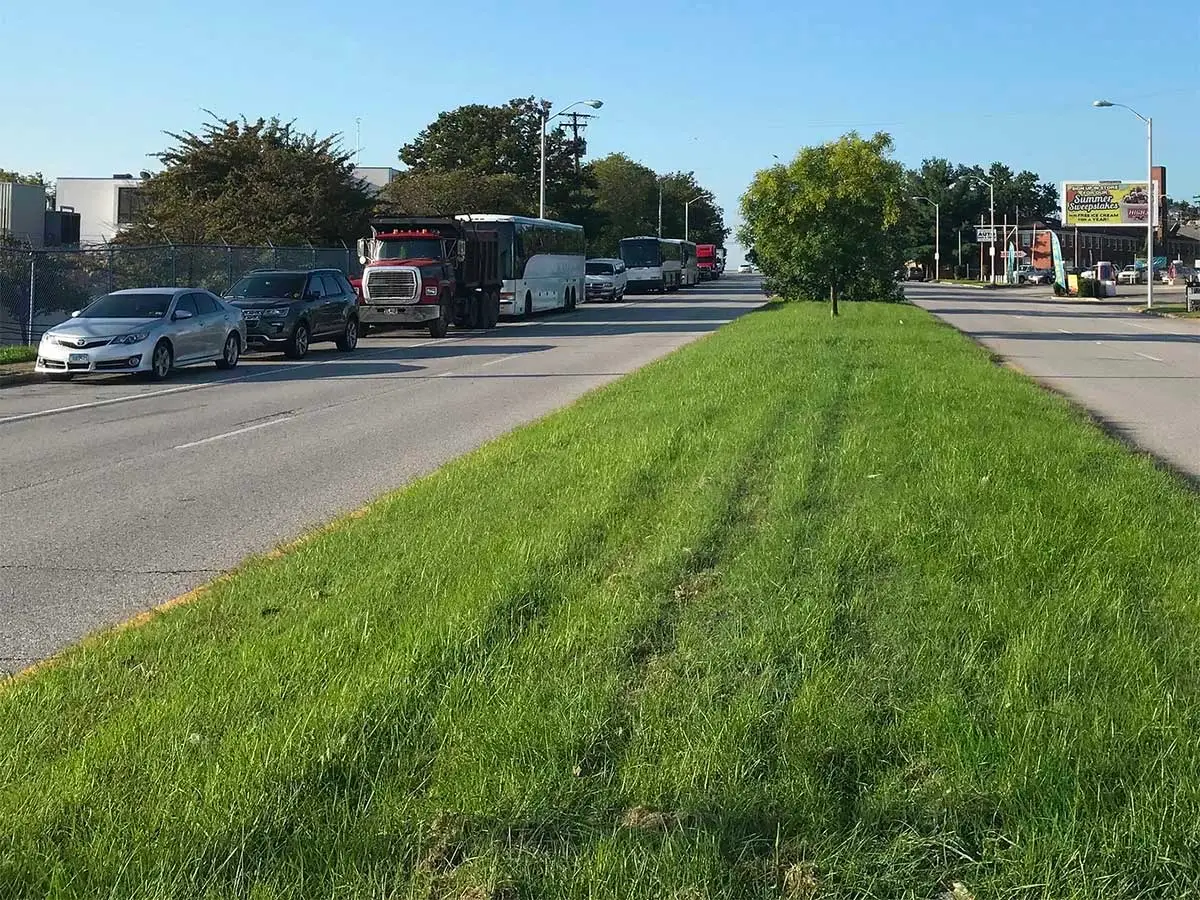
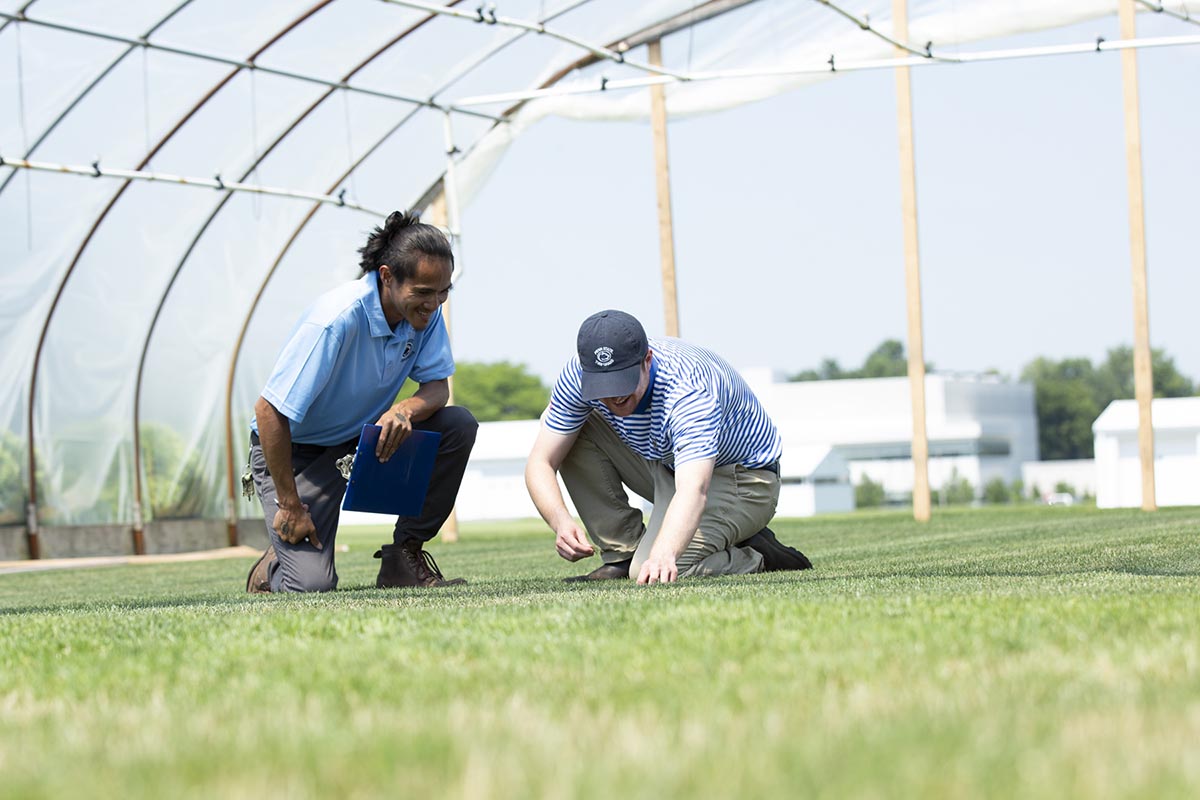

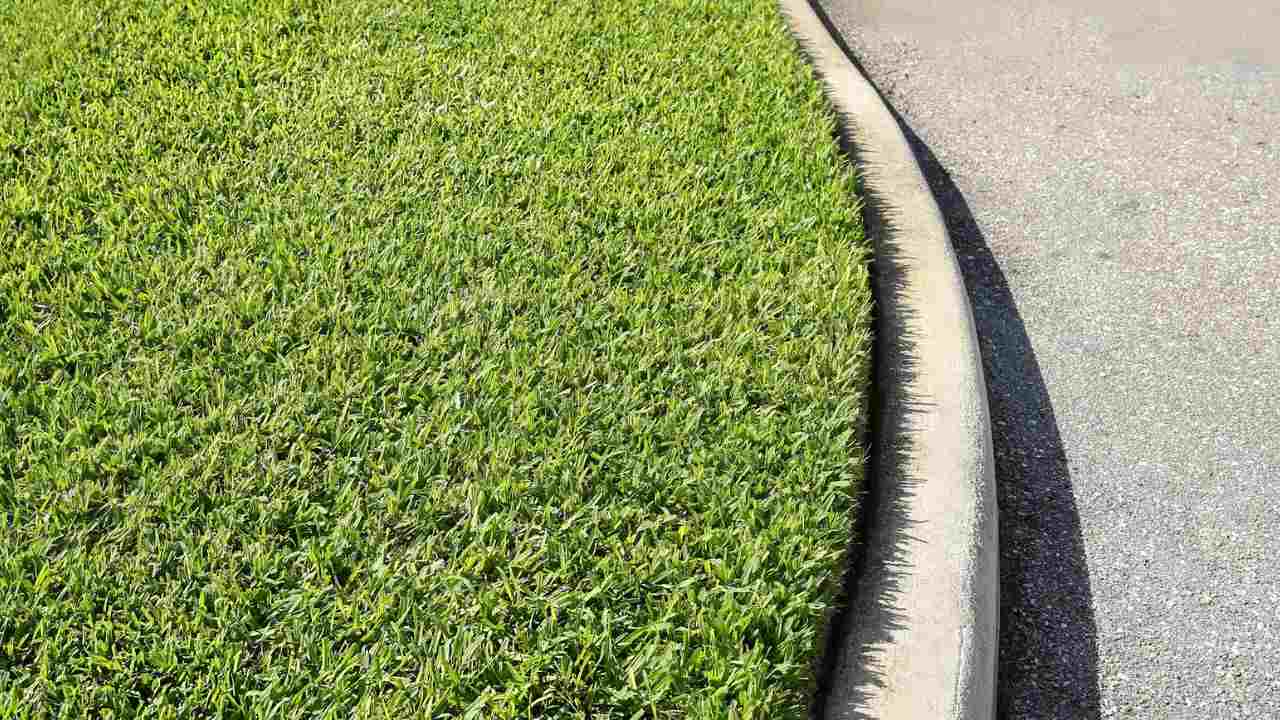
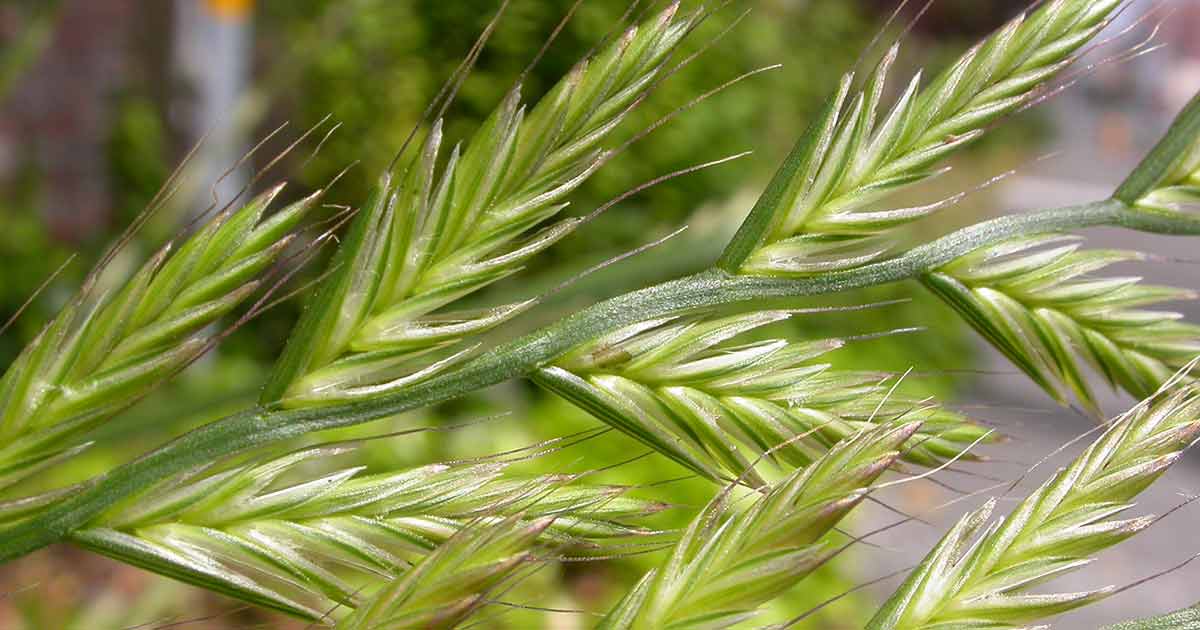
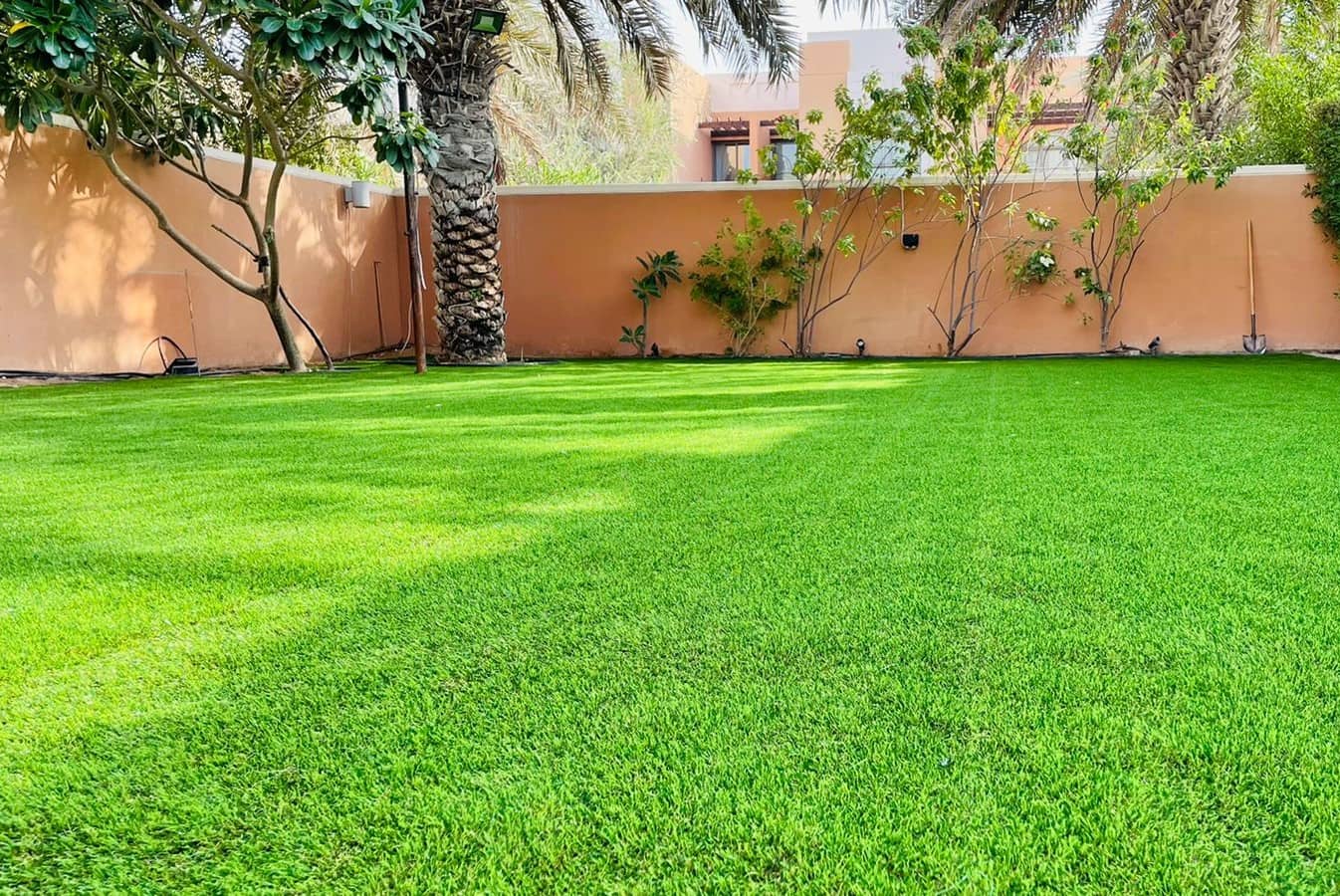
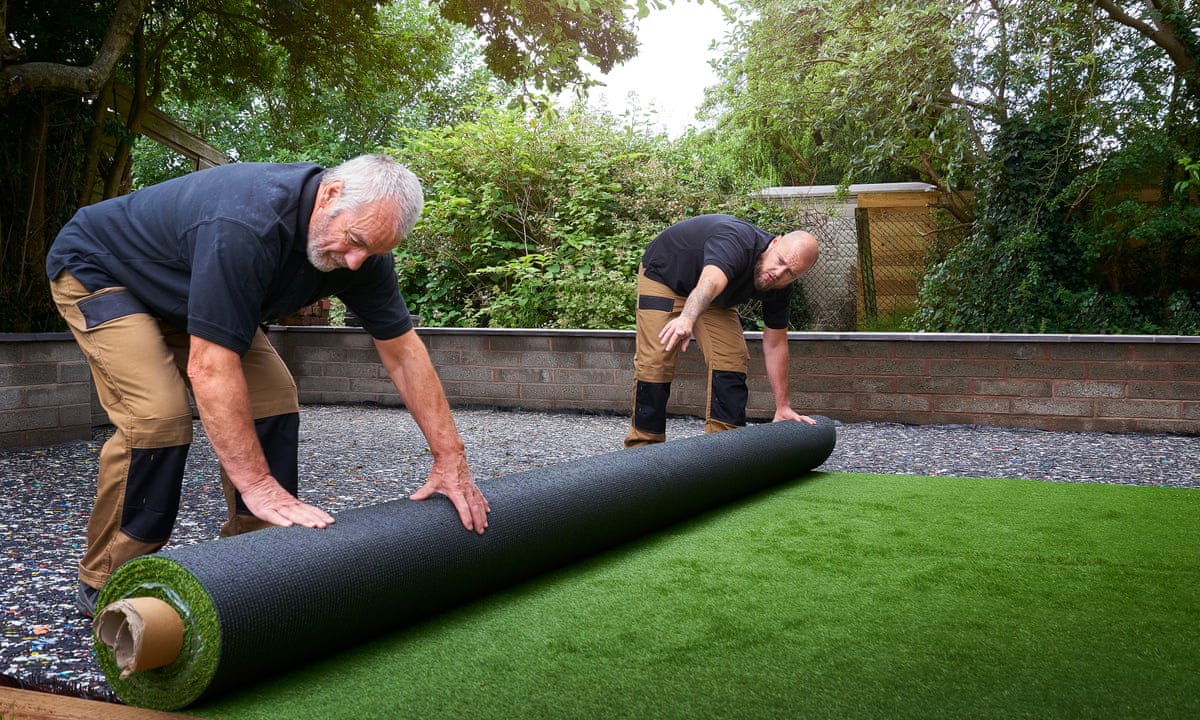
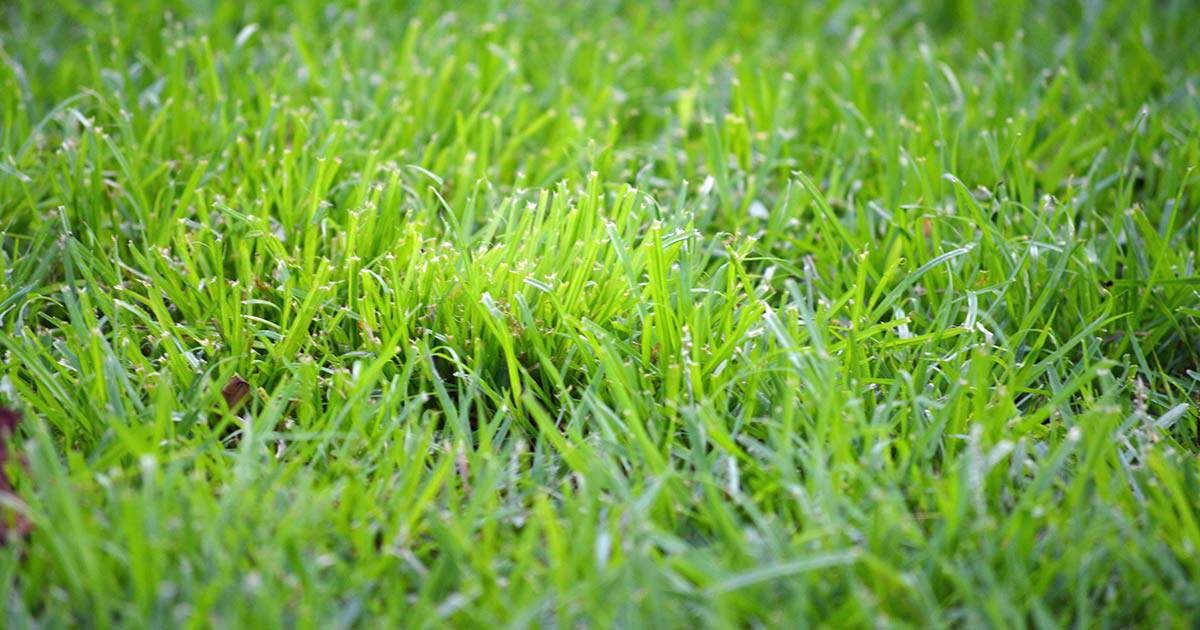

0 thoughts on “What Are Turf Grass Types”